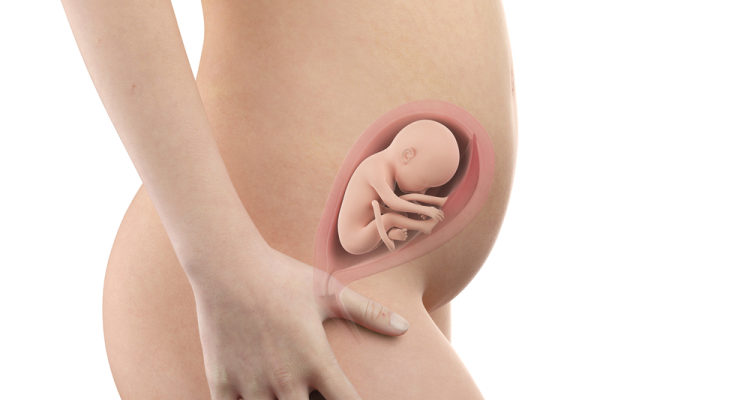Folic acid is one of the B vitamins (B9). Folic acid is a very important part of everyone's diet. This nutrient can help cells grow and develop. Best of all, folic acid is especially important for women before and during the early stages of pregnancy. So let's find out which food folic acid is in?
Folic acid is abundant in what foods?

7 natural sources of nutrition
1. Dark green or leafy vegetables
Folic acid or folate got its name from the word "foliage", meaning "leaf", referring to green vegetables that contain a lot of vitamins. Therefore, during pregnancy, try to include as much green vegetables with each meal as possible. This not only helps to cure the common constipation in pregnant women but also provides a large amount of folic acid for the body. Alternatively, choose romaine lettuce for your salad instead of lettuce. Both of these lettuce contain folate, but romaine has 64.0 mcg / cup. Lettuce also contains folate 4.0 mcg per 1/2 cup, not ground.
2. Orange juice

There is nothing more wonderful than waking up every morning with a cool glass of orange juice in the hot summer. If you are tired of drinking fresh orange juice, you can process oranges into many different dishes such as marmalade, orange candy or western dishes with delicious orange sauce can add folic acid.
3. Bread
In addition to providing an abundant amount of folic acid for the body, bread also has a lot of effects on pregnant women. Eating bread helps pregnant mothers keep their skin, good for the digestive system and not only that also helps the bones of both mothers and babies be strong.
4. Rice
5. Beans such as red beans, black beans, soybeans
If you want to preserve vitamins, you can directly swallow the above beans with water, or process the beans into more delicious dishes such as red bean tea, green bean tea, black bean tea or green bean stew. with lotus root.
Particularly, peas are one of the best plant sources of folate. Experts say one cup of peas provides 94.0 mcg of folate. The Ohio State University folate fact sheet indicates that 1/2 cup of lentils provides even more folate (180 mcg or 45% of your daily standard).
6. Breakfast cereals
Cereals are rich in nutrients such as iron, selenium, magnesium, folic acid and B vitamins (B1, B2 ...), so they are extremely necessary for pregnant women.
7. Kidneys, yeast and beef extracts
Kidneys, yeast and beef extracts are foods that pregnant mothers should not ignore during pregnancy because of the great benefits that these nutritious foods bring. Best of all, to ensure the amount of folic acid you need, you should use about 2–3 servings of these sources per day.
Like many other vitamins, folic acid is very soluble in water and breaks down easily when cooking. Therefore, when preparing food biesn, pregnant mothers should steam, stir-fry or use the microwave, not to boil to preserve as many nutrients as possible.
In addition, folic acid can also be found in foods such as fresh fruits, nuts, cheese, yogurt, milk, potatoes, breads, brown rice, oats, eggs, salmon and meat. cow.
Functional food sources
We need about 200 mcg of folic acid per day. However, during pregnancy, pregnant mothers need to 400 mcg, especially during the first 12 weeks of pregnancy. It is often used in supplement form, because it is difficult to meet the required amount through food alone.
1. How to preserve
You should store at room temperature, away from moisture and light. Do not store in the bathroom or in the refrigerator freezer. Keep in mind that each medicine will have different methods of storage. Therefore, you should carefully read the storage instructions on the packaging or ask your pharmacist. Keep medicine out of reach of children and pets.
You should not throw medications in the toilet or plumbing pipes. You can consult your pharmacist or search for information online on how to safely discard your medicine.
2. How much should I drink?
Take a vitamin pill containing folic acid every day as directed by your doctor. As the foods listed above may not provide the required amount of folic acid to meet your daily needs.
Research shows that mothers who have had a baby with a neural tube defect alone should take high doses of folic acid (4,000 mcg) at least 1 month before fertilization and for the rest of the first trimester.
3. Side effects
Folic acid usually has very few side effects . If you have any unusual effects since taking this product, let your doctor know. If you experience any serious allergic symptoms such as hives, itching, swelling (especially of the face, tongue, or throat), dizziness, or difficulty breathing, get medical help right away.
Not everyone experiences these side effects. Other side effects not mentioned may occur. If you have any questions about side effects, consult your doctor or pharmacist.
It is recommended that you take a vitamin pill that contains folic acid every day as directed by your doctor as the foods listed above may not provide the necessary amounts of folic acid to meet your daily needs. Consult your doctor and dietitian for advice and guidance on how to develop the necessary folic acid supplement diet.
Some notes when using folic acid for pregnant women
When should you start using folic acid?
You should start using folic acid before getting pregnant. Neural tube defects usually develop during the first 28 days of pregnancy.
If you are pregnant and have never taken folic acid, you should start now to help prevent any neurological defects during the first trimester of pregnancy.
What are the risks of folic acid deficiency?
A lack of folic acid increases the likelihood of a neural tube defect (a defect in the growth of the spinal cord).
Split vertebrae is a condition in which the spinal cord is exposed. If the spine (spinal cord) around the spinal cord is somewhat incomplete during the first 28 days after fertilization, the spinal cord or spinal fluid bulges, usually in the lower back.
Anencephaly is a serious underdevelopment of the brain.
Folic acid or folate is essential for the body. If you are pregnant or intend to become pregnant, you must pay more attention to folic acid. This supplement is essential to ensure the health of both mother and baby













